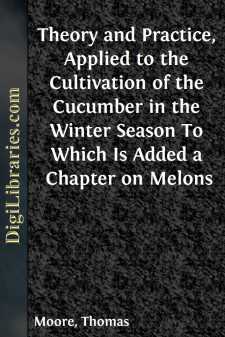Categories
- Antiques & Collectibles 13
- Architecture 36
- Art 48
- Bibles 22
- Biography & Autobiography 813
- Body, Mind & Spirit 142
- Business & Economics 28
- Children's Books 15
- Children's Fiction 12
- Computers 4
- Cooking 94
- Crafts & Hobbies 4
- Drama 346
- Education 46
- Family & Relationships 57
- Fiction 11829
- Games 19
- Gardening 17
- Health & Fitness 34
- History 1377
- House & Home 1
- Humor 147
- Juvenile Fiction 1873
- Juvenile Nonfiction 202
- Language Arts & Disciplines 88
- Law 16
- Literary Collections 686
- Literary Criticism 179
- Mathematics 13
- Medical 41
- Music 40
- Nature 179
- Non-Classifiable 1768
- Performing Arts 7
- Periodicals 1453
- Philosophy 64
- Photography 2
- Poetry 896
- Political Science 203
- Psychology 42
- Reference 154
- Religion 513
- Science 126
- Self-Help 84
- Social Science 81
- Sports & Recreation 34
- Study Aids 3
- Technology & Engineering 59
- Transportation 23
- Travel 463
- True Crime 29
Theory and Practice, Applied to the Cultivation of the Cucumber in the Winter Season To Which Is Added a Chapter on Melons
by: Thomas Moore
Description:
Excerpt
Chap. I.
INTRODUCTORY REMARKS.
The Cucumber, Cucumis sativa, is supposed to be a native of the East Indies; but like many other of our culinary plants, the real stations which it naturally has occupied, are involved in obscurity: in habit it is a trailing herb, with thick fleshy stems, broadly palmate leaves, and yellow axillary monæcious flowers. In the natural arrangement of the vegetable kingdom, the genus of which it forms part, ranks in the first grand class, Vasculares, or those plants which are furnished with vessels, and woody fibre; in the sub-class Calycifloræ, or those in which the stamens are perigynous; and in the order Cucurbitaceæ, or that group, of which the genus Cucurbita, or Gourd family is the type.
The affinities of this order, are chiefly with Loasaceæ, and Onagraceæ; with the former it agrees in its inferior unilocular fruit, having a parietal placentæ, and with the latter, in its definite perigynous stamens, single style, and exalbuminous seeds. It has also some affinity with Passifloraceæ, and Papayaceæ, in the nature of the fruit, and with Aristolochiaceæ, in its twining habit, and inferior ovarium. M. Auguste St. Hiliare, also regards it as being related to Campanulaceæ, in the perigynous insertion of the stamens, the single style with several stigmas, the inferior ovarium, and in the quinary division of the floral envelope, in connection with the ternary division of the fruit.
The properties of the plants comprised in this natural family, are not numerous; a bitter laxative quality pervades many of them, a familiar example of which is the resinous substance called Colycinthine, the production of the Colocynth gourd, in which the active purgative principle is concentrated, rendering it drastic, and irritating. Among our native plants the roots of Bryonia dioica, in common with the perennial roots of all the plants in the order, possess these purgative properties. On the other hand, the seeds are sweet, yielding an abundant supply of oil; and it may be worthy of remark, that they never partake of the properties of the pulp with which they are surrounded in the fruit.
The Cucumber does not possess the properties common to the order, in very powerful degree; its fruit is however too cold for many persons, causing flatulency, diarrhœa, and even cholera; by others, it may be eaten with avidity, without producing any injurious effects.
The names by which the Cucumber is recognised by the Hindoos, are Ketimon, and Timou. In the French, it is called Concombre; in the German, Gurke; and in the Italian, Citriuolo. As a cultivated plant, it is of nearly equal antiquity with the Vine; being mentioned by the writer of the Pentateuch, as being cultivated extensively in Egypt, above 3000 years since.
The cultivation of this plant, and the production of fine fruit at an early season, is an object of emulation among gardeners of the present day; and from this cause, many important improvements in the mode of its cultivation have been effected....










